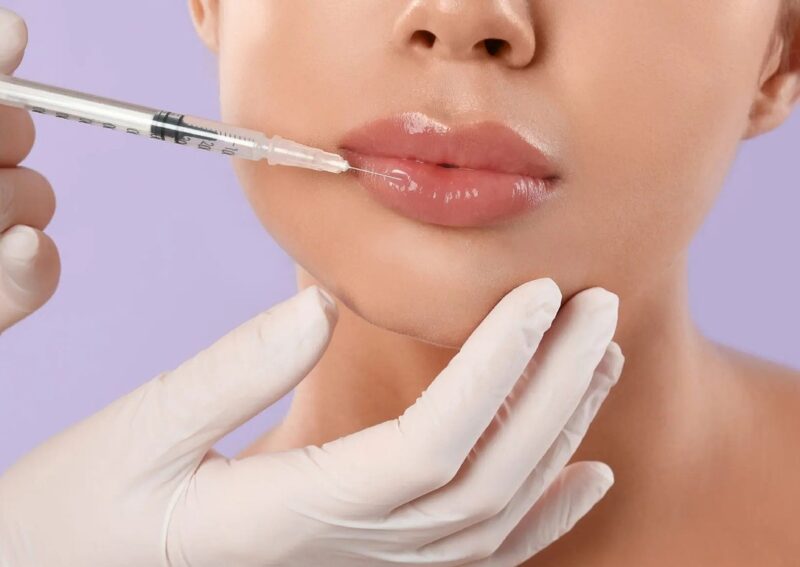The Role of Social Media in Shaping Aesthetic Treatment Trends in the East and West Midlands
Introduction
In recent years, the influence of social media on various aspects of life has become increasingly evident, particularly in the realm of aesthetic treatments. The East and West Midlands, regions known for their rich cultural heritage and diverse populations, have not been immune to this trend. Social media platforms such as Instagram, Facebook, and TikTok have emerged as powerful tools in shaping public perceptions and preferences regarding beauty and aesthetic treatments. This article explores the role of social media in influencing aesthetic treatment trends within these regions, examining how digital platforms contribute to the dissemination of beauty ideals and the growing demand for cosmetic procedures.
The Rise of Social Media in Aesthetic Trends
Social media has revolutionized the way individuals access information and form opinions about beauty and aesthetics. With the proliferation of beauty influencers, cosmetic clinics, and dermatologists sharing content online, social media has become a primary source of inspiration and education for those considering aesthetic treatments. The visual nature of platforms like Instagram allows users to showcase before-and-after transformations, share personal experiences, and promote the latest trends in cosmetic procedures. This has led to a democratization of beauty standards, where individuals from the East and West Midlands can easily access global beauty trends and incorporate them into their local contexts.
Cultural Influences and Regional Differences
While social media provides a global platform for aesthetic trends, cultural influences and regional differences play a significant role in shaping how these trends are adopted in the East and West Midlands. The regions’ unique cultural landscapes, characterized by a blend of traditional and contemporary influences, contribute to the diversity of aesthetic preferences. Social media acts as a bridge, connecting local communities with broader beauty narratives while allowing for the adaptation of trends to suit regional tastes and values. Understanding these cultural nuances is essential for comprehending the impact of social media on aesthetic treatment trends in these areas.
The Impact of Influencers and Online Communities
Influencers and online communities have become pivotal in driving aesthetic treatment trends on social media. In the East and West Midlands, local influencers and beauty enthusiasts play a crucial role in shaping public perceptions and encouraging the adoption of specific treatments. These individuals often share personal stories, reviews, and recommendations, creating a sense of trust and authenticity among their followers. Additionally, online communities provide a platform for individuals to discuss their experiences, seek advice, and share information about aesthetic treatments, further amplifying the influence of social media in these regions.
Conclusion
The role of social media in shaping aesthetic treatment trends in the East and West Midlands is multifaceted, encompassing the rise of digital platforms, cultural influences, and the impact of influencers and online communities. As social media continues to evolve, its influence on aesthetic preferences and practices in these regions is likely to grow, highlighting the need for ongoing research and understanding of this dynamic relationship.
Overview of Aesthetic Treatment Trends
Historical Context of Aesthetic Treatments
Aesthetic treatments have evolved significantly over the decades, influenced by cultural, technological, and societal changes. Initially, these treatments were primarily surgical, with procedures like facelifts and rhinoplasties dominating the landscape. Over time, advancements in medical technology and a growing emphasis on non-invasive procedures have broadened the scope of aesthetic treatments available today.
Current Popular Treatments
Non-Invasive Procedures
Non-invasive procedures have surged in popularity due to their minimal downtime and reduced risk compared to surgical options. Treatments such as Botox, dermal fillers, and laser therapies are widely sought after for their ability to provide quick and noticeable results without the need for surgery.
Surgical Procedures
Despite the rise of non-invasive options, surgical procedures remain a staple in aesthetic treatments. Procedures like breast augmentation, liposuction, and tummy tucks continue to be popular, offering more permanent solutions for those seeking significant changes.
Technological Advancements
The aesthetic treatment industry has benefited greatly from technological advancements. Innovations such as laser technology, ultrasound, and radiofrequency have enhanced the effectiveness and safety of both surgical and non-surgical procedures. These technologies have also expanded the range of treatments available, allowing for more personalized and precise interventions.
Cultural Influences
Cultural factors play a significant role in shaping aesthetic treatment trends. In the East and West Midlands, as in other regions, societal beauty standards and cultural norms influence the types of treatments that gain popularity. The desire to emulate celebrity looks or adhere to cultural ideals of beauty often drives demand for specific procedures.
Demographic Trends
The demographic profile of those seeking aesthetic treatments is broadening. While traditionally dominated by women, there is a growing interest among men in both surgical and non-surgical procedures. Additionally, younger individuals are increasingly seeking treatments, driven by the influence of social media and the desire to maintain a youthful appearance.
Economic Factors
Economic conditions also impact aesthetic treatment trends. In times of economic prosperity, there is typically an increase in the demand for elective procedures. Conversely, economic downturns may lead to a decline in such treatments, although non-invasive procedures often remain popular due to their lower cost compared to surgery.
Regional Variations
In the East and West Midlands, regional variations in aesthetic treatment trends can be observed. These variations are influenced by local cultural norms, economic conditions, and the availability of skilled practitioners. Understanding these regional differences is crucial for practitioners and businesses operating in the aesthetic treatment industry.
The Influence of Social Media on Consumer Behavior
Social Media as a Source of Information
Social media platforms have become a primary source of information for consumers seeking aesthetic treatments. Users often turn to platforms like Instagram, Facebook, and TikTok to discover the latest trends, procedures, and products. Influencers and beauty experts frequently share their experiences and results, providing a wealth of information that is easily accessible. This democratization of information allows consumers to make more informed decisions about aesthetic treatments, as they can see real-life examples and read reviews from peers.
Peer Influence and Social Proof
The concept of social proof plays a significant role in shaping consumer behavior on social media. When users see their peers or influencers they admire undergoing certain aesthetic treatments, they are more likely to consider these options for themselves. The visibility of likes, comments, and shares further amplifies this effect, as popular posts can create a sense of urgency or a fear of missing out (FOMO). This peer influence can drive consumers to explore treatments they might not have considered otherwise.
Visual Appeal and Aspirational Content
Social media is inherently visual, making it an ideal platform for showcasing aesthetic treatments. High-quality images and videos can highlight the transformative effects of procedures, creating aspirational content that appeals to consumers’ desires for self-improvement. The use of filters and editing tools can enhance these visuals, presenting an idealized version of beauty that consumers strive to achieve. This visual appeal can significantly impact consumer behavior, encouraging individuals to pursue treatments that promise similar results.
Accessibility and Engagement
Social media platforms offer a level of accessibility and engagement that traditional marketing channels cannot match. Consumers can directly interact with clinics, practitioners, and other users, asking questions and seeking advice in real-time. This direct line of communication fosters a sense of trust and transparency, which can influence consumer decisions. Engaging content, such as live Q&A sessions or behind-the-scenes looks at procedures, can further enhance this relationship, making consumers feel more comfortable and informed about their choices.
The Role of Influencers and Brand Ambassadors
Influencers and brand ambassadors play a pivotal role in shaping consumer behavior on social media. These individuals often have large followings and are perceived as trusted sources of information. When they endorse specific treatments or products, their followers are more likely to consider these options. Influencers can also set trends by showcasing new or innovative procedures, driving interest and demand among their audience. Their endorsements can lend credibility to aesthetic treatments, making them more appealing to potential consumers.
User-Generated Content and Community Building
User-generated content (UGC) is a powerful tool in influencing consumer behavior. When consumers share their own experiences and results with aesthetic treatments, it creates a sense of community and shared experience. This content can serve as authentic testimonials, providing social proof and encouraging others to explore similar options. Community building through UGC can foster a supportive environment where consumers feel empowered to make informed decisions about their aesthetic journeys.
Comparative Analysis: East Midlands vs. West Midlands
Demographic Influences
Population Diversity
The East Midlands and West Midlands exhibit distinct demographic profiles that influence aesthetic treatment trends. The East Midlands, with its more rural and suburban areas, tends to have a population that is less diverse compared to the urbanized West Midlands. This diversity in the West Midlands, particularly in cities like Birmingham, leads to a wider range of aesthetic preferences and demands, influenced by various cultural backgrounds.
Age Distribution
Age distribution also plays a crucial role in shaping aesthetic trends. The East Midlands has a slightly older population on average, which may drive demand for anti-aging treatments. In contrast, the West Midlands, with a younger demographic, might see a higher interest in preventative skincare and non-invasive procedures.
Economic Factors
Income Levels
Economic disparities between the two regions can affect the accessibility and popularity of aesthetic treatments. The West Midlands, with its larger urban centers, generally has higher income levels, potentially leading to a greater capacity for spending on aesthetic procedures. This economic advantage can result in a higher uptake of both surgical and non-surgical treatments.
Employment Sectors
The predominant employment sectors in each region also influence aesthetic trends. The East Midlands, with its strong manufacturing base, might see different aesthetic priorities compared to the West Midlands, where service industries dominate. This can affect the types of treatments that are popular, with the West Midlands possibly favoring treatments that align with professional and social lifestyles.
Cultural Perceptions
Beauty Standards
Cultural perceptions of beauty significantly impact aesthetic treatment trends. In the East Midlands, traditional beauty standards may prevail, leading to a preference for subtle enhancements. Conversely, the West Midlands, with its cosmopolitan influence, might embrace more diverse and bold beauty standards, encouraging a wider variety of aesthetic treatments.
Social Media Influence
Social media plays a pivotal role in shaping aesthetic trends in both regions, but its impact varies. The West Midlands, with its larger urban population, may have a more significant social media presence, leading to quicker adoption of global aesthetic trends. In contrast, the East Midlands might experience a slower diffusion of these trends due to its more dispersed population.
Accessibility to Aesthetic Services
Availability of Clinics
The availability of aesthetic clinics differs between the two regions. The West Midlands, with its urban centers, offers a higher concentration of clinics and practitioners, providing residents with more options and easier access to treatments. The East Midlands, being more rural, may have fewer clinics, which can limit accessibility and influence the types of treatments that are popular.
Transportation and Infrastructure
Transportation and infrastructure also play a role in accessibility. The West Midlands benefits from a well-developed transportation network, facilitating easy access to aesthetic services. In contrast, the East Midlands may face challenges due to less comprehensive infrastructure, potentially affecting the frequency and type of treatments residents pursue.
Trends in Aesthetic Treatments
Popular Procedures
The types of aesthetic procedures popular in each region can vary. In the West Midlands, there may be a higher demand for cutting-edge treatments and technologies, driven by a younger, trend-conscious population. The East Midlands might see a preference for more traditional procedures, reflecting its demographic and cultural characteristics.
Technological Adoption
Technological adoption in aesthetic treatments can differ between the regions. The West Midlands, with its urban influence, may be quicker to adopt new technologies and techniques, while the East Midlands might be more conservative, favoring tried-and-tested methods. This difference can shape the landscape of available treatments and the pace at which new trends are embraced.
Key Social Media Platforms and Their Impact
Instagram has become a pivotal platform for aesthetic treatment trends, particularly due to its visual-centric nature. The platform allows practitioners and clinics to showcase before-and-after photos, which can significantly influence potential clients’ decisions. Influencers and beauty bloggers often share their personal experiences with various treatments, providing authentic reviews and recommendations. The use of hashtags and geotags helps in reaching a broader audience, making it easier for users in the East and West Midlands to discover local services and trends. Instagram Stories and Reels offer dynamic ways to engage with audiences, providing quick insights into procedures and results.
TikTok
TikTok’s rapid rise in popularity has made it a key player in shaping aesthetic treatment trends. The platform’s short-form video content is ideal for demonstrating quick transformations and sharing educational content about procedures. Viral challenges and trends often emerge, with users showcasing their treatment journeys, which can lead to increased interest and demand. The algorithm-driven feed allows for widespread visibility, enabling aesthetic professionals in the Midlands to reach a diverse audience. TikTok’s younger demographic is particularly influential in setting new beauty standards and trends.
Facebook remains a significant platform for aesthetic treatment discussions, particularly among older demographics. It serves as a hub for community groups where users can share experiences, ask for recommendations, and discuss concerns about various treatments. Clinics and practitioners often use Facebook to post detailed information about their services, share client testimonials, and engage with potential clients through comments and messages. The platform’s event feature is useful for promoting open days or informational sessions, fostering a sense of community and trust.
YouTube
YouTube is a powerful platform for in-depth content related to aesthetic treatments. It allows practitioners to create detailed video content that explains procedures, showcases results, and provides expert advice. Tutorials and vlogs from beauty influencers can demystify complex treatments, making them more accessible to the general public. The platform’s searchability and long-form content format make it an excellent resource for those seeking comprehensive information before committing to a treatment.
Snapchat
Snapchat, while not as dominant as other platforms, still plays a role in shaping aesthetic trends, particularly among younger audiences. Its ephemeral nature encourages real-time sharing of treatment experiences, often leading to spontaneous interest and engagement. Clinics and practitioners can use Snapchat to offer exclusive promotions or behind-the-scenes looks at their services, creating a sense of urgency and exclusivity.
Twitter’s role in aesthetic treatment trends is more focused on real-time discussions and news sharing. It is a platform where users can quickly share opinions, experiences, and updates about the latest trends and innovations in the aesthetic industry. Hashtags and trending topics can amplify discussions, allowing for broader engagement and visibility. Aesthetic professionals can use Twitter to participate in industry conversations, share insights, and connect with peers and potential clients.
Case Studies: Influencers and Viral Trends
Influencers in the East Midlands
Local Influencers and Their Impact
In the East Midlands, local influencers have played a significant role in shaping aesthetic treatment trends. These influencers often have a strong connection with their audience, which allows them to effectively promote new treatments and products. For example, a well-known beauty influencer from Nottingham has been instrumental in popularizing non-invasive procedures such as dermal fillers and microdermabrasion. By sharing her personal experiences and results on platforms like Instagram and YouTube, she has influenced her followers to explore these treatments.
Collaboration with Clinics
Influencers in the East Midlands frequently collaborate with local aesthetic clinics to offer exclusive promotions and discounts. These partnerships not only boost the clinic’s visibility but also provide influencers with content that resonates with their audience. A case in point is a Leicester-based influencer who partnered with a local clinic to document her journey with laser skin treatments. This collaboration resulted in a surge of interest and bookings for the clinic, demonstrating the power of influencer marketing in the region.
Influencers in the West Midlands
The Rise of Micro-Influencers
In the West Midlands, micro-influencers have emerged as key players in the aesthetic treatment industry. With smaller but highly engaged followings, these influencers are perceived as more relatable and trustworthy. A Birmingham-based micro-influencer, for instance, has gained popularity by sharing her experiences with various skincare treatments, including chemical peels and microneedling. Her honest reviews and before-and-after photos have encouraged her followers to try these treatments, highlighting the effectiveness of micro-influencer marketing.
Cross-Platform Influence
West Midlands influencers often leverage multiple social media platforms to maximize their reach and impact. By creating content for Instagram, TikTok, and YouTube, they can engage with diverse audiences and drive trends across different demographics. A prominent influencer from Coventry has successfully used TikTok to showcase her aesthetic treatment journey, resulting in viral trends such as the “lip flip” procedure. Her cross-platform strategy has not only increased her follower count but also influenced the aesthetic preferences of her audience.
Viral Trends and Their Origins
The Role of TikTok in Trend Formation
TikTok has become a powerful platform for the emergence of viral aesthetic treatment trends in both the East and West Midlands. The app’s algorithm promotes content that quickly gains traction, allowing trends to spread rapidly. A notable example is the “glass skin” trend, which originated from a viral TikTok video by a Derby-based influencer. This trend, characterized by a smooth and luminous complexion, has led to increased demand for treatments like hydrafacials and chemical peels in the region.
Instagram’s Influence on Aesthetic Preferences
Instagram continues to be a major driver of aesthetic treatment trends, with its visual nature making it an ideal platform for showcasing results. Influencers in the Midlands often use Instagram to highlight the latest treatments and techniques, sparking interest and discussion among their followers. The “fox eye” trend, popularized by a series of Instagram posts from a Wolverhampton influencer, exemplifies how the platform can shape aesthetic preferences. This trend has led to a rise in demand for thread lifts and other procedures that achieve the desired look.
The Impact of Viral Trends on Local Clinics
Increased Demand and Innovation
Viral trends have a direct impact on local aesthetic clinics, often leading to increased demand for specific treatments. Clinics in the Midlands have responded by expanding their service offerings and investing in new technologies to meet the evolving needs of their clients. For instance, the popularity of the “jawline contouring” trend, fueled by social media influencers, has prompted clinics in cities like Leicester and Birmingham to offer specialized treatments and training for their staff.
Challenges and Opportunities
While viral trends present opportunities for growth, they also pose challenges for clinics in the Midlands. The rapid pace at which trends emerge and fade can make it difficult for clinics to keep up with demand and maintain relevance. However, by staying attuned to social media developments and collaborating with influencers, clinics can capitalize on these trends and enhance their reputation in the industry.
Challenges and Ethical Considerations
Misinformation and Unrealistic Expectations
Social media platforms are rife with misinformation, which can lead to unrealistic expectations among individuals seeking aesthetic treatments. Influencers and unverified sources often promote procedures without providing comprehensive information about potential risks and outcomes. This can result in individuals pursuing treatments based on incomplete or misleading information, leading to dissatisfaction or harm.
Pressure to Conform to Beauty Standards
The pervasive nature of social media can create immense pressure to conform to certain beauty standards. This pressure is often exacerbated by the use of filters and photo-editing tools, which can distort reality and promote unattainable ideals. Individuals may feel compelled to undergo aesthetic treatments to align with these standards, potentially compromising their mental health and self-esteem.
Informed Consent and Patient Autonomy
Ensuring informed consent is a critical ethical consideration in aesthetic treatments. Social media can complicate this process by influencing individuals’ decisions before they consult with a qualified professional. Patients may arrive with preconceived notions about treatments, which can challenge practitioners in providing unbiased, comprehensive information and ensuring that consent is truly informed.
Privacy and Confidentiality
The sharing of before-and-after photos and patient testimonials on social media raises concerns about privacy and confidentiality. While some individuals willingly share their experiences, others may feel pressured to do so, potentially compromising their privacy. Practitioners must navigate these issues carefully, ensuring that patient confidentiality is maintained and that any shared content is done with explicit consent.
Regulation and Professional Standards
The rapid evolution of social media outpaces the development of regulations and professional standards in the aesthetic industry. This can lead to a lack of oversight and accountability, with unqualified individuals offering treatments or advice online. Establishing clear guidelines and enforcing professional standards is essential to protect consumers and maintain the integrity of the industry.
Impact on Mental Health
The constant exposure to idealized images and beauty standards on social media can have a detrimental impact on mental health. Individuals may experience increased anxiety, depression, or body dysmorphia as a result of comparing themselves to others. This can drive the demand for aesthetic treatments, sometimes for the wrong reasons, highlighting the need for mental health support and awareness in the context of aesthetic trends.
Cultural Sensitivity and Diversity
Social media often promotes a narrow definition of beauty, which may not be inclusive of diverse cultural and ethnic backgrounds. This can lead to a homogenization of beauty standards, marginalizing certain groups and perpetuating cultural insensitivity. It is crucial for practitioners and influencers to promote diversity and inclusivity in aesthetic treatments, respecting and celebrating different cultural aesthetics.
Conclusion and Future Outlook
Current Impact of Social Media on Aesthetic Trends
Social media platforms have become pivotal in shaping aesthetic treatment trends in both the East and West Midlands. Influencers and beauty experts frequently share their experiences and results, creating a ripple effect that influences public perception and demand. The immediacy and visual nature of platforms like Instagram and TikTok allow for rapid dissemination of new trends, making them accessible to a wide audience. This has led to a democratization of beauty standards, where individuals are more informed and empowered to make decisions about aesthetic treatments.
Regional Differences in Social Media Influence
While both regions are influenced by social media, there are distinct differences in how trends are adopted. The East Midlands, with its diverse urban and rural mix, may see a slower uptake of certain trends compared to the more urbanized West Midlands. Cultural factors and local influencers play a significant role in how trends are perceived and adopted. Understanding these regional nuances is crucial for practitioners and marketers aiming to cater to these audiences effectively. SP Beauty are leading Tamworth Aesthetics specialists.
Challenges and Ethical Considerations
The rise of social media as a trendsetter in aesthetic treatments brings with it several challenges. The pressure to conform to certain beauty standards can lead to unrealistic expectations and, in some cases, mental health issues. There is also the risk of misinformation, as not all content shared on social media is accurate or safe. Practitioners must navigate these challenges by promoting ethical practices and ensuring that clients are well-informed about the risks and benefits of treatments.
Technological Advancements and Their Role
Technological advancements in social media platforms continue to evolve, offering new ways to engage with audiences. Augmented reality (AR) and virtual reality (VR) are becoming more prevalent, allowing users to visualize potential aesthetic treatments before committing. These technologies could further influence trends by providing a more interactive and personalized experience. As these tools become more sophisticated, they are likely to play a significant role in the future of aesthetic treatment trends.
Future Trends and Predictions
Looking ahead, the role of social media in shaping aesthetic treatment trends is expected to grow even more influential. As platforms continue to innovate, the integration of e-commerce features could streamline the process of discovering and booking treatments directly through social media. The rise of micro-influencers, who often have more engaged and niche audiences, may also lead to more personalized and diverse trend adoption. Furthermore, as sustainability becomes a more prominent concern, there may be a shift towards promoting eco-friendly and ethical aesthetic treatments.
Strategic Recommendations for Stakeholders
For practitioners and businesses in the aesthetic industry, staying ahead of social media trends is crucial. Engaging with influencers, investing in digital marketing strategies, and leveraging new technologies can enhance visibility and credibility. It is also important to prioritize transparency and education, ensuring that clients have access to accurate information. By adopting a proactive approach, stakeholders can effectively navigate the evolving landscape of aesthetic treatment trends in the East and West Midlands.






